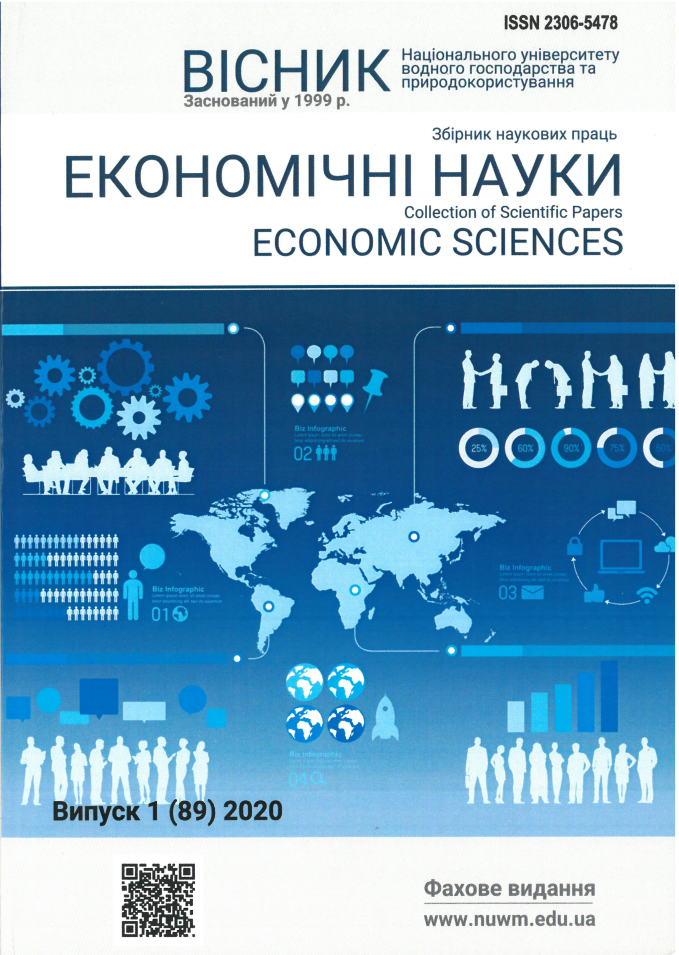WAGES ON THE NATIONAL LABOR MARKET: DYNAMIC, REGIONAL-SECTORAL AND SOCIAL ASPECT
DOI:
https://doi.org/10.31713/ve1202019Keywords:
salary, wages, labor market, real wages, nominal wages.Abstract
The article examines the main trends in the wage in the national labormarket. The analysis of remuneration in the national labor market revealed the following features and problems: the growth rates of nominal wages during 2014–2018 varied from 6.0 to 37.1%; during 2014–2015, there was a significant decrease in real wages by 6.5% and 20.2% respectively in Ukraine; there is a differentiation of wages by type of economic activity (the highest wages are observed in financial and insurance activities, the lowest – in health care and social assistance); the highest level of remuneration is observed in Kyiv and Donetsk region, the lowest - in Ternopil and Chernihiv region; the highest level of wages occurs in the age group 35-44 and 25-34 years, the lowest – in the age group up to 25 years; in the national economy, the hourly wage is more widespread, with workers reaching more than 94%; the lowest wage level occurs among private enterprises, the highest – in public authorities; there is a significant gender pay gap in Ukraine (about 23% in favor of men); in the structure of wages, about 57% falls on the basic wage fund, while the incentive and compensatory payments account for only 6%; Compared to the European labor market in the national economy, there is a critically low level of remuneration – 2.3 Euros / hour, which is almost twice below the level of wages in Bulgariaand eighteen times lower than in Norway. Priority directions of improvement of regulation of remuneration in the national labor market are offered.Improving wages in Ukraine should be based on a number of principles,among which should be highlighted the principle of social justice,differentiation of wages, social security, continuous growth of real wages,compliance with wages and labor costs. Among the main areas forimproving the regulation of wages in Ukraine are the following: introduction of monitoring the impact of wages on the main socio-economic indicators of development; ensuring that wages are formed in accordance with the market value of labor; active involvement in the process of improving the mechanism of wage formation of all subjects of the labor market; ensuring the widespread use in the Ukrainian economy of flexible forms; ensuring a close relationship between the wages and salaries and salaries of each employee’s individual performance; ensuring a direct dependence of wages on the efficiency of the enterprise.References
Holosnichenko D. I., Dovzhyk A. M. Oplata pratsi: problemy ta shliakhy vyrishennia. VISNYK NTUU «KPI». Politolohiia. Sotsiolohiia. Pravo. 2014. Vyp. 3/4 (23/24). S. 185–189.
Ilienko N., Spasenko Yu. Zabezpechennia optymalnoi dyferentsiatsii zarobitnoi platy – vazhlyvyi napriam rehuliuvannia oplaty pratsi. Ukraina: aspekty pratsi. 2015. № 1, 2015. S. 22–27.
Kolot A. M. Orhanizatsiino-ekonomichnyi mekhanizm rehuliuvannia zarobitnoi platy i shliakhy yoho vdoskonalennia (na materialakh promyslovykh pidpryiemstv Ukrainy) : avtoref. dys. ... d-ra ekon. nauk : 08.06.01. Kyiv. 1998. 36 s.
Oplata pratsi ta sotsialno-trudovi vidnosyny: statystychna informatsiia. Derzhavna sluzhba statystyky Ukrainy. URL: http://www.ukrstat.gov.ua (data zvernennia: 20.01.2020).
Pratsia v Ukraini u 2018 rotsi : statystychnyi zbirnyk. Derzhavna sluzhba statystyky Ukrainy. URL: http://www.ukrstat.gov.ua (дата звернення: 20.01.2020).
Pro oplatu pratsi : Zakon Ukrainy vid 24.03.1995 № 108/95-VR. Data onovlennia: 13.02.2020. URL: https://zakon.rada.gov.ua/laws/card/108/95-%D0%B2%D1%80 (data zvernennia: 20.01.2020).
Earnings (Database 2015-2018) / European Commission. Eurostat. URL: http://ec.europa.eu/eurostat/data/database (data zvernennia: 20.01.2020).

